Team:UESTC Software/Modeling
Modeling
Photo From © PEXELS
Overview
Modeling is one of the most important parts in our project. In the modeling, the data we used mainly from the CEG (Cluster of Essential Genes)[1] data base.In the CEG, genes’ category were based on their corresponding KEGG(Kyoto Encyclopedia of Genes and Genomes) Orthology (KO) and COG[2](Clusters of Orthologous Group) category and function descriptions.
Ubiquity-retaining strategy[3] was first put up by Koonin .E V, we used half-retaining strategy to cover the shortage. Actually we use the 42% as the ratio not the half. Our modeling is to find it and prove it logically.
In the modeling, we use the knowledge of statistic. Find the relation of size of minimal gene set with number of organisms and HNR(Half Number Ratio). HNR is a ratio value that we use to replace the “half” in our strategy. Then we construct the 3d modeling for that.
Besides, to get the ideal value of HNR, we use the multivariable linear regression[4] to get the fitting polynomial for the relation of OE rate with the HNR. From the polynomial, we find the appropriate HNR for our strategy, which has the highest OE rate and many other advantages compared with other HNR.Finally, we test our software’s calculating time: start as we input organisms until we get the output result.
We divide our modeling into 3 steps.
Step 1
Firstly, we randomly choose 4 organisms from the data base(totally 29 organisms) as the experiment no.1 and rechoose 5 organism as experiment no.2 until we have 28 organisms in experiment no.25(We choose 10 times for one experiment, then get the average of every data of it) .We observed the trend of the size of minimal gene set from experiment no.1~25, and noticed a decrease trend when using the ubiquity-retaining strategy(Koonin) while a stabilization trend when using the half-retaining strategy. Line chart as follow.
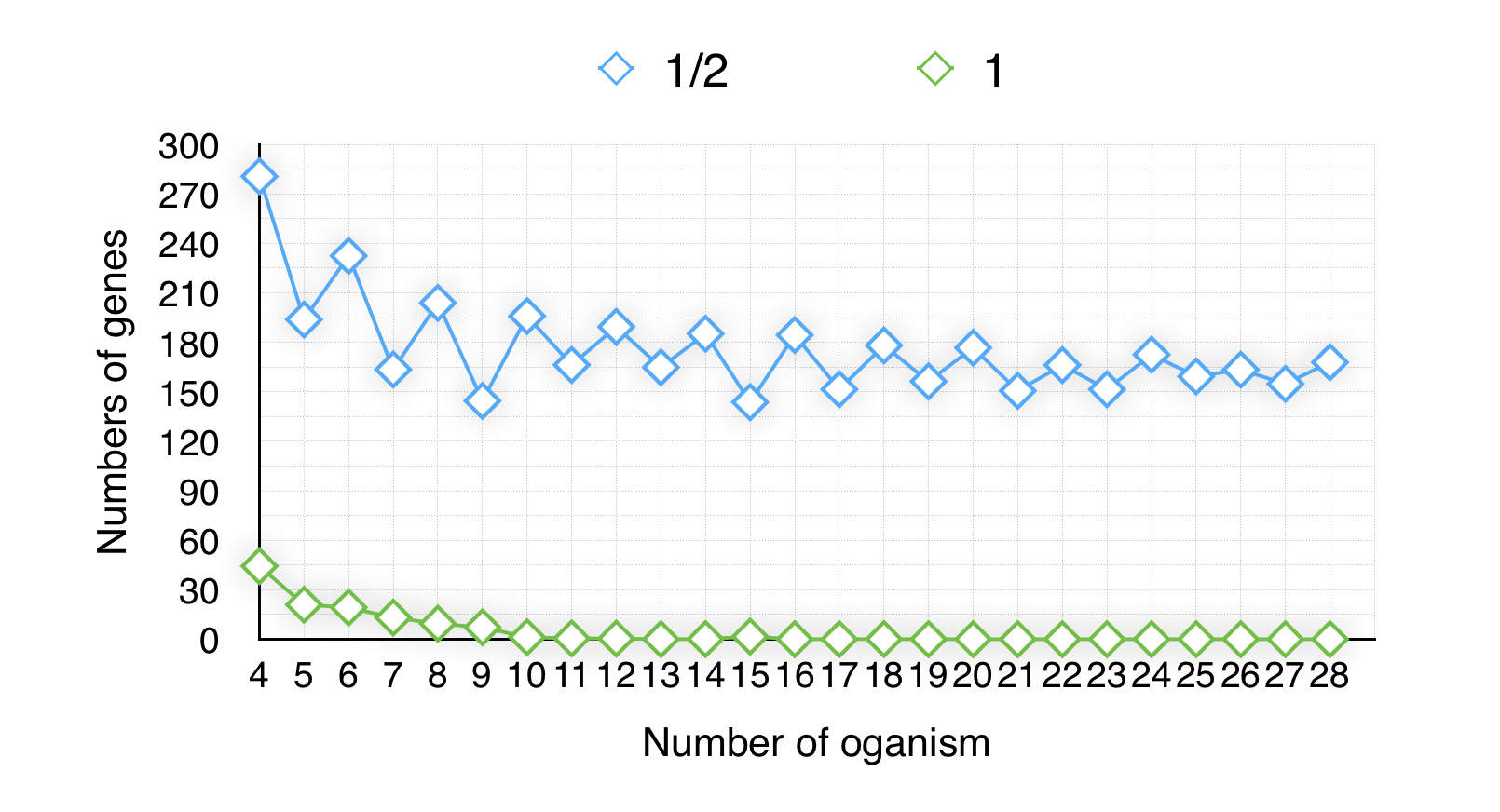
Obviously, the result of the half-retaining strategy seems more steady and more significant with the number of organisms’ increasing than the ubiquity-retaining strategy.
Secondly, to find the relationship between the HNR(Half Number Ratio) and the size of minimal gene set. We divide 100% into 100 groups (1%~100%). Now we have 100 groups and 25 experiments. Then we respectively get the experiment no.1~25’s size of minimal gene set in every group. And finally get line And finally get line chart like follow two figures.(Cause there are too much data that we only list the 1/10,2/10~10/10’s result in Size of gene set – Number of organisms chart):
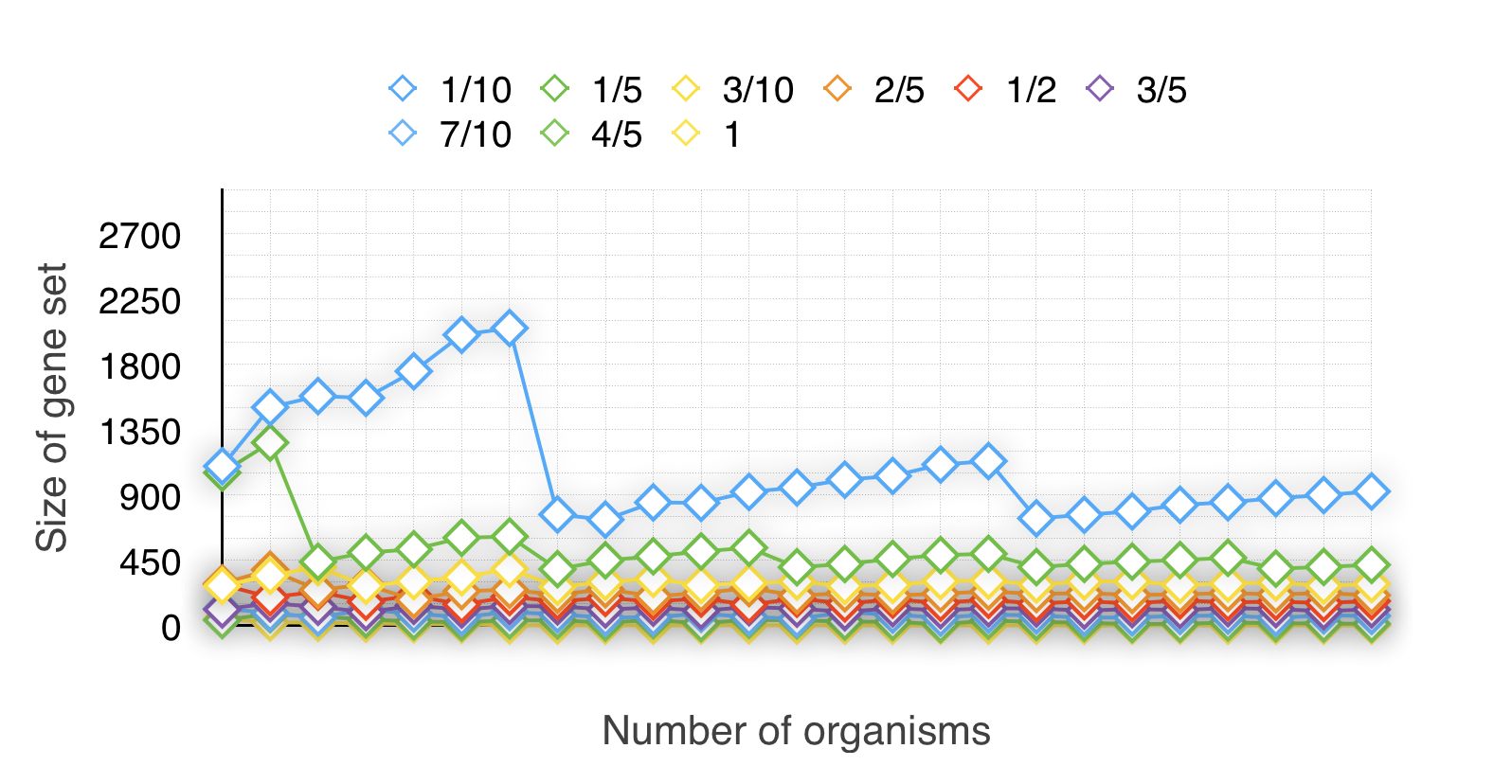
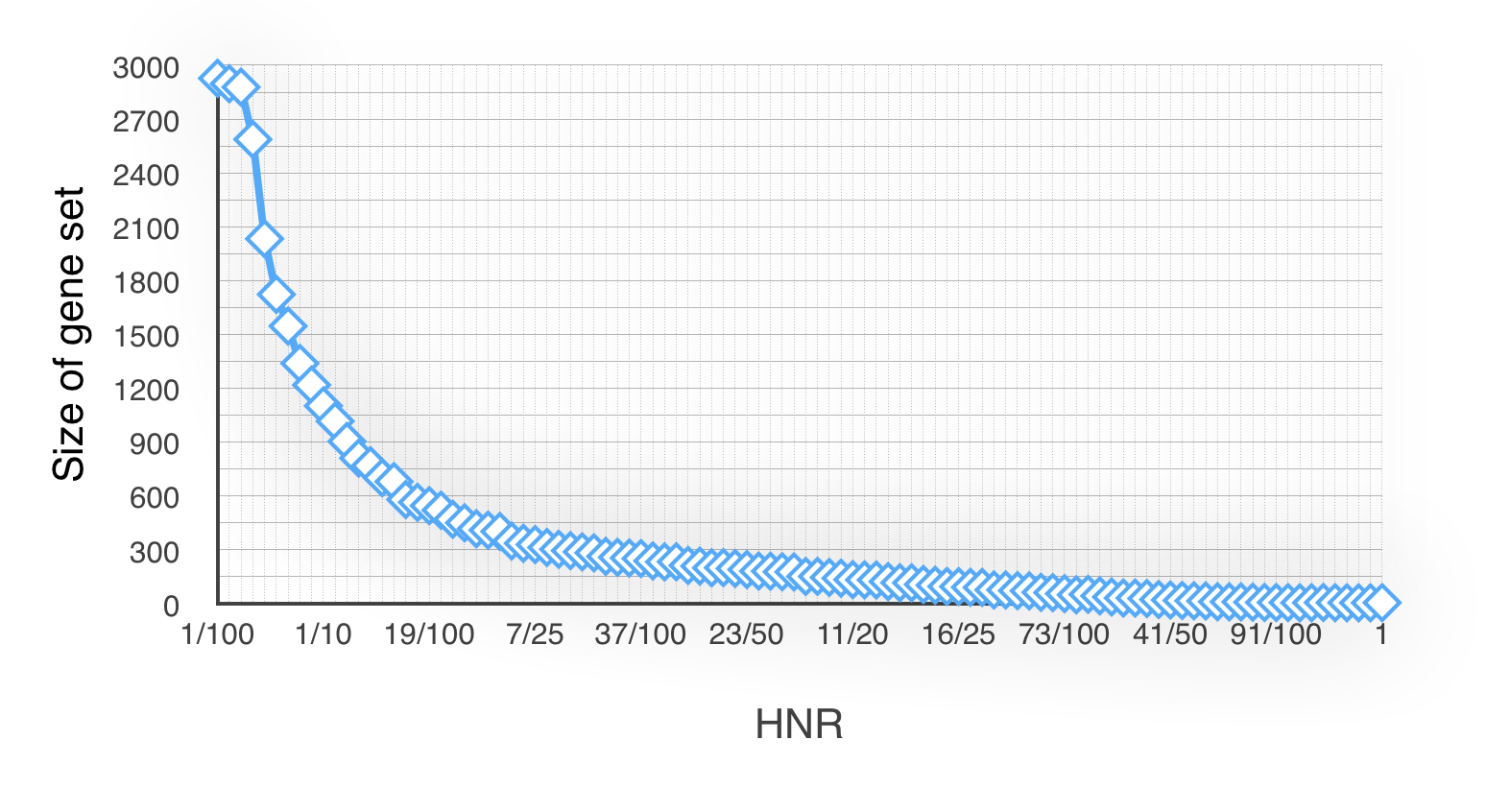
Our ideal size of minimal gene set is about 150~300. The conclusion is that the HNRs between interval [30/100~51/100] ’s size of minimal gene set are more close to the ideal amount.
Finally,to get a more particular knowledge of changing trend. We made a diagram to illustrate the relation of minimal gene set with number of organisms and HNR.
We use the least square method to get the fitting polynomialFor every lines in the Size of gene set – Number of organisms chart(100 polynomials here). We choose the 3 order polynomial. To get the 4 coefficients for the polynomial, we use the same method to get the relation of coefficient with the HNR. The 4 coefficients’ fitting polynomials are as follows:

The polynomial for the relation of the minimal gene set with number of organisms and HNR is as follows:

Now we have the polynomial to connect the relation of minimal gene set with number of organisms and HNR. The diagram is as follows:
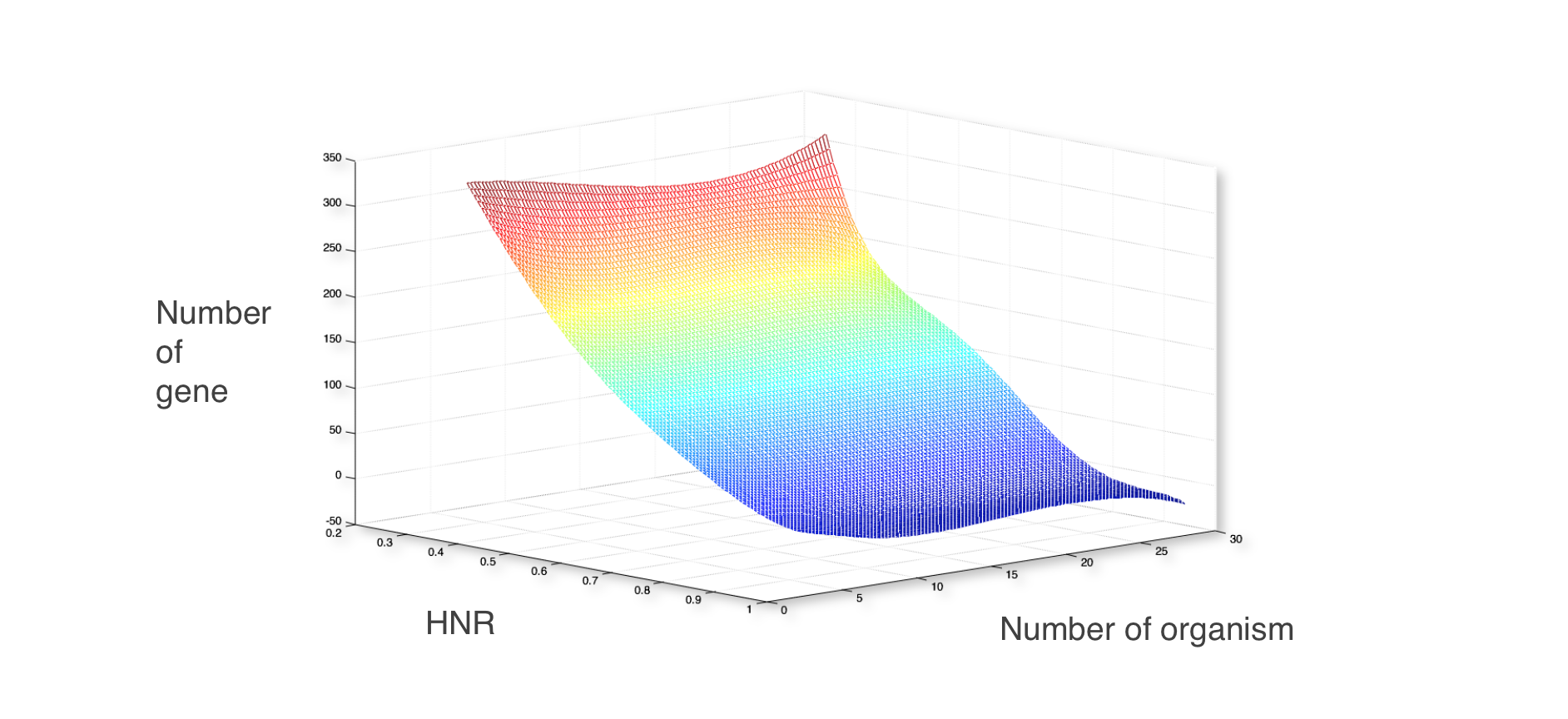
From diagram above, we found an area that have a stable gene number when organisms number changed. It means use these half number ratio can get a stable result of minimal gene set. But to find the most stable HNR for the “half” retaining strategy, let’s move to step 2.
Step 2
From the Step 1, we divided 100% into 100 groups (1%~100%). And we also have 25 experiments. Besides, before doing the experiments, we should define a new variable to measure whether the strategy is stable and effective. We call it OE rate( Overlapping Effective Rate). It’s calculated by this formula:

cUGS: the number of current experiment’s universal-gene-set-result
UGS29:the number of 29-organism-experiment’s universal-gene-set-result
This formula is to reduce the influence of the Gene’s amount. More OE rate means the strategy has a more sufficient result.
Now we have 100 groups and 25 experiments. Then we respectively calculate experiment no.1~25’s average of OE rate in every group. And finally get this line chart like following figure.
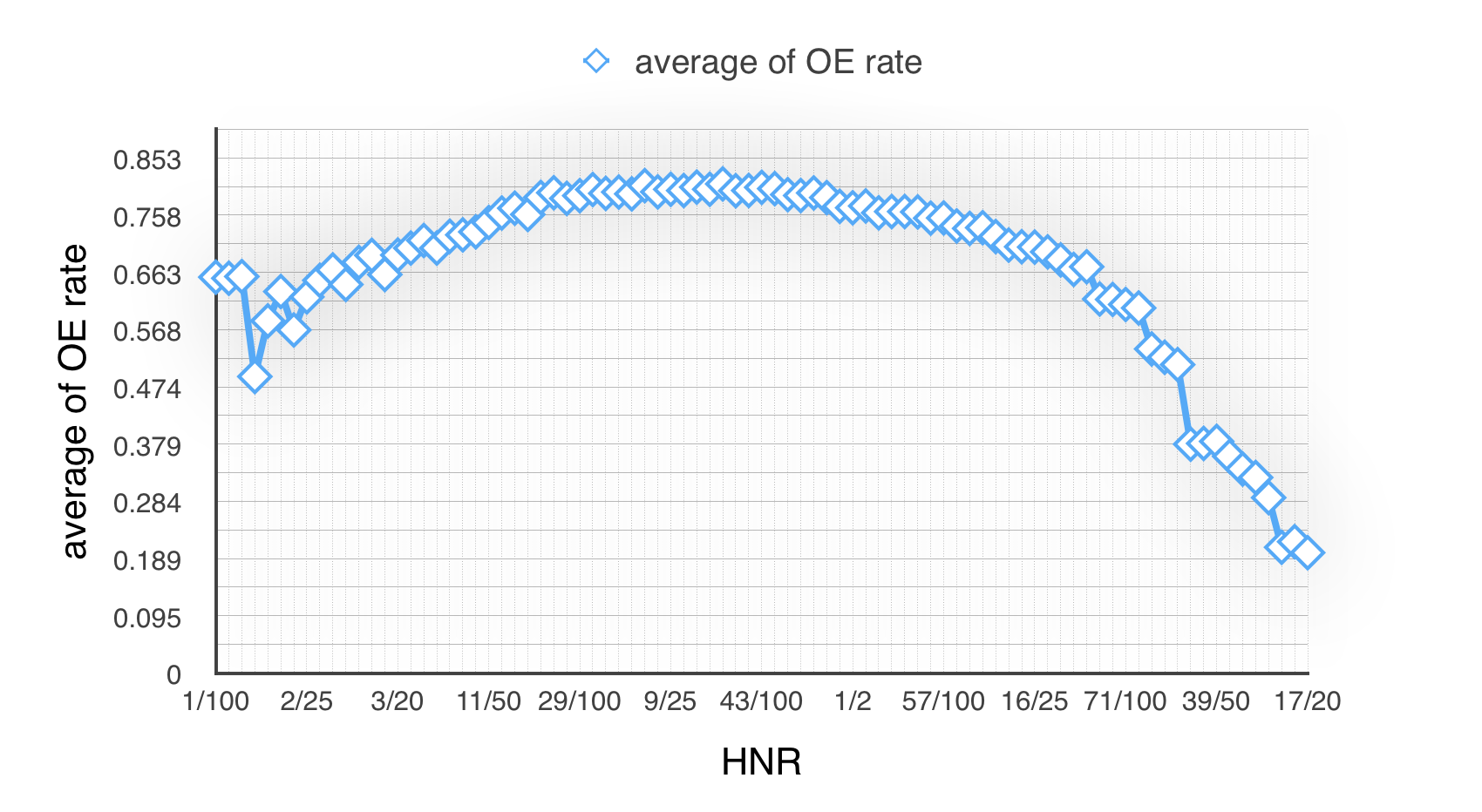
Obviously, we could find there are several groups has an ideal result, and also some unexpected results.
Next, we calculate experiment no.1~25’s variance in every group. Line chart as follow:
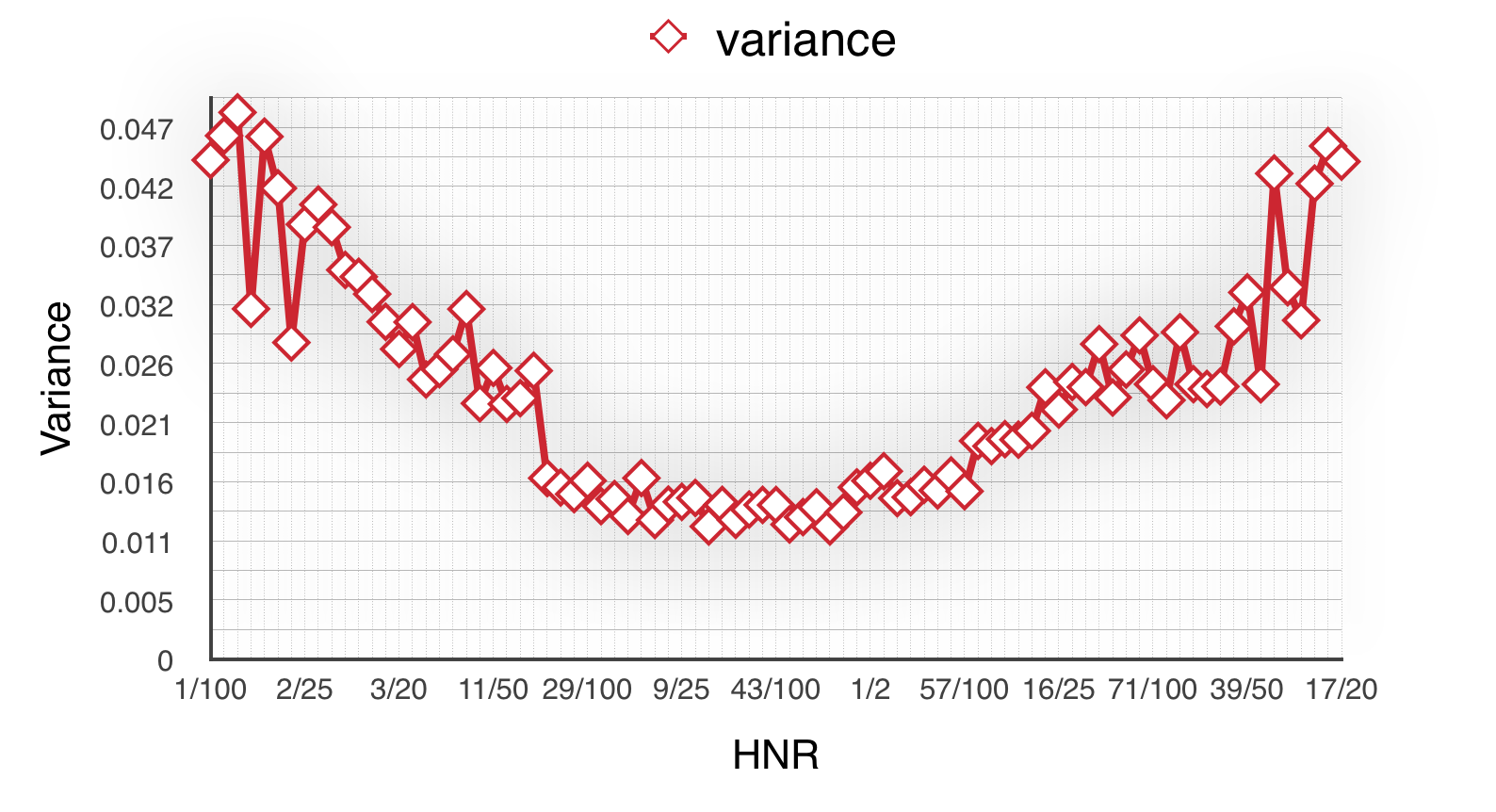
From above figure, comparing the variances we could easily find the groups between 26/100~61/100’s variances are less than others which means strategy in this interval is more steady. It’s fortunate that we nearly get the same conclusion with the best interval mentioned in step 1.
Fortunately, we got a pretty results. We use the least square method to get the fitting polynomial. The new curve graph like this:
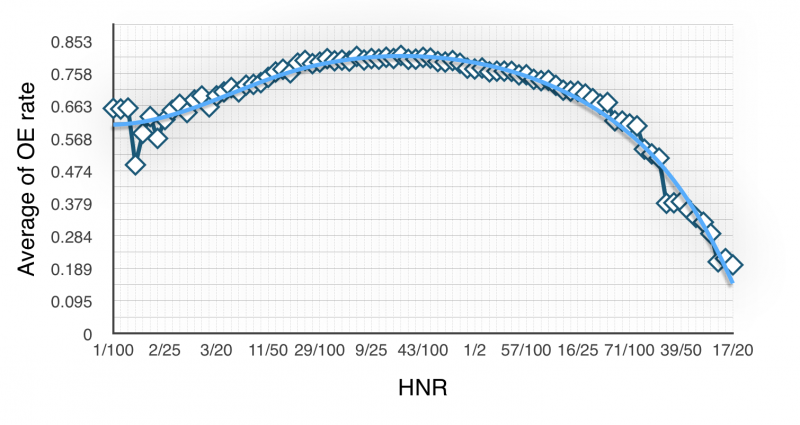
The polynomial is as follow:

After comparing the order of polynomial,we choose the 4 order polynomial. The correlation coefficient is 0.9703. According to the list. The polynomial is 97% to be accepted.
Next we calculate the maximization point as our ideal HNR (42%). That is how we define the ratio value of the retaining strategy.
Reference
[1] Ye YN, Hua ZG, Huang J, Rao N, Guo FB. CEG: a database of essential gene clusters. BMC Genomics, 2013, 14:769. (From instructor’s group)
[2] Tatusov RL, Galperin MY, Natale DA, Koonin EV. The COG database: a tool for genome-scale analysis of protein functions and evolution. Nucleic Acids Res. 2000, 28(1):33-6.
[3] Mushegian AR, Koonin EV. A minimal gene set for cellular life derived by comparison of complete bacterial genomes. Proc Natl Acad Sci U S A. 1996, 93(19):10268-73.
[4] Cho MJ, Martinez WL, Martinez / Cho, Statistics in MATLAB: A Primer, CRC Press, Inc. 2014.
